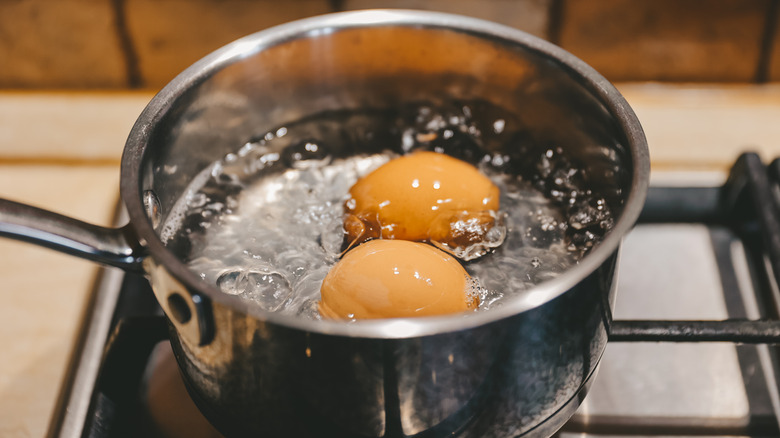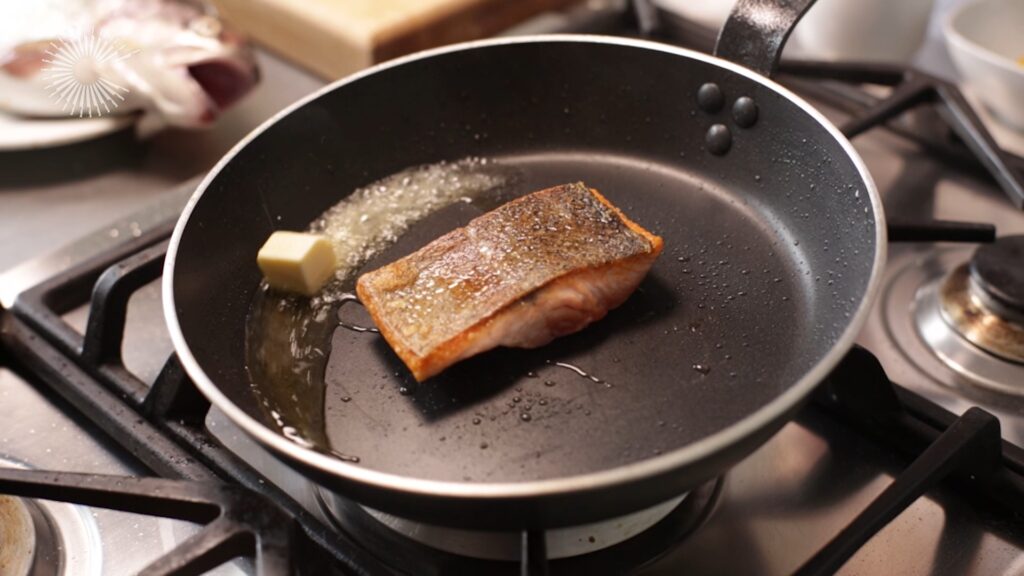Kitchen Temperatures: The Complete Guide from Simmer to Boil

Why Cooking Temperatures Matter
Understanding cooking temperatures is your secret weapon in the kitchen. Your success in cooking depends on having the correct temperature. Understanding cooking temperatures helps you gain cooking confidence no matter what you prepare.
Quick Reference: Essential Cooking Temperatures
Here are the temperatures you’ll use most often in the kitchen:
- Refrigeration: 35-38°F (2-3°C)
- Poaching: 160-180°F (71-82°C)
- Simmering: 185-200°F (85-93°C)
- Boiling: 212°F (100°C) at sea level
- Pan Frying: 350-375°F (175-190°C)
- Deep Frying: 350-375°F (175-190°C)
Moist-Heat Cooking Methods
Poaching (160-180°F)

Perfect for delicate foods like eggs and fish. Look for tiny bubbles occasionally rising to the surface – if the water’s bubbling vigorously, it’s too hot. You want the water to be steaming with small bubbles just breaking the surface.
Simmering (185-200°F)
Your go-to temperature for stocks, stews, and braises. The surface should show constant, gentle bubbling. If your liquid is rapidly bubbling, reduce the heat – aggressive boiling can toughen meat and cloud stocks.
Boiling (212°F)
Use a full boil for pasta, blanching vegetables, or potatoes. You’ll see rapid, vigorous bubbling. Remember that water boils at lower temperatures at high altitudes, so you might need longer cooking times.
Dry-Heat Cooking Temperatures
Oven Temperature Zones
Low (250-300°F): Best for slow-roasting meats and dehydrating Medium (325-375°F): Perfect for:
- Most baked goods
- Casseroles
- Roasted vegetables
High (400-450°F): Use for:
- Pizza
- Crusty breads
- Quick-roasting vegetables
Oil-Based Cooking
Pan Frying (350-375°F)

Test if your pan is ready by adding a drop of water – it should sizzle and evaporate immediately. The oil should shimmer but not smoke. Perfect for:
- Chicken cutlets
- Fish fillets
- Pancakes
- Eggs
Deep Frying (350-375°F)

Getting this temperature right is crucial:
- Too cold (below 350°F): Results in greasy, soggy food
- Too hot (above 375°F): Browns outside before inside cooks
- Just right: Creates golden-brown, crispy coating
Food Safety Temperatures
These temperatures aren’t suggestions – they’re safety requirements:
- Chicken/Turkey: 165°F (74°C)
- Ground Meats: 160°F (71°C)
- Beef/Pork/Lamb: 145°F (63°C)
- Fish/Shellfish: 145°F (63°C)
Pro Tips for Temperature Control
- Invest in a good instant-read thermometer – it’s your most reliable kitchen friend
- Let refrigerated ingredients reach room temperature before cooking for even heating
- Maintain consistent temperature by not overcrowding your pan or pot
- Account for carryover cooking – food continues cooking after removal from heat
Common Temperature Mistakes to Avoid
- Starting with too high heat – gradual heating often gives better results
- Not preheating your pan or oven fully before cooking
- Overcrowding the pan, which lowers cooking temperature
- Ignoring carryover cooking, leading to overcooked food
Conclusion
Learn these kitchen temperature basics first and you will start cooking better right away. Daily cooking practice will help you figure out how foods react to heat so you can develop your temperature instincts. Keep this guide next to your kitchen tools so you can use it during recipe experiments and cooking exploration. The more you work with these temperatures the better you will cook like a professional.
